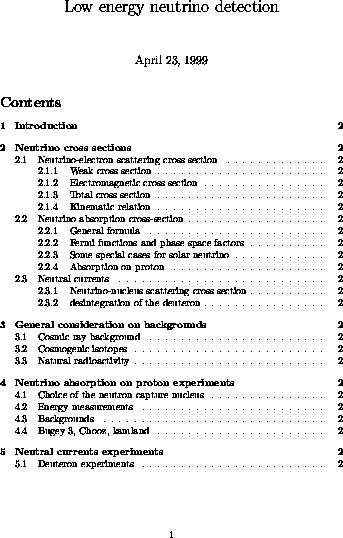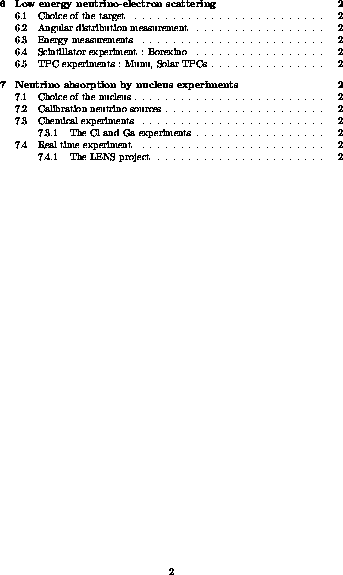Les inscriptions à l'Ecole de GIF 99
pourront se faire dès le dimanche 12 septembre, entre
18h et 20h, au Royal Hotel, 2, rue Gabriel Péri
(plan).
Elles se poursuivront lundi matin, à coté de l'amphithéâtre
de l'ISN, à partir de 8h30.
Il vous sera remis une malette avec entre autre tous les
renseignements pratiques pour joindre l'ISN, un plan et des horaires
de bus. Les tickets de bus/tramway sont vendus à l'unité dans
les bus (7,50F l'unité), et par carnet de 10 dans les
bureaux de tabac ou aux arrêts de tramway (55,00F le carnet).
Le bus n ![]() 34 qui dessert l'ISN circule de 5h50 à 20h15
en semaine.
34 qui dessert l'ISN circule de 5h50 à 20h15
en semaine.
Durant toute la semaine, la restauration sera assurée par la cafétéria du
polygône (50,00 F le repas).
Le banquet aura lieu le jeudi 16 septembre, à 20h, au Restaurant du
Téléphérique
où vous aurez une vue de Grenoble la nuit. Pour vous y rendre, vous
prendrez le téléphérique de la Bastille. Une participation globale de
120,00 F par personne vous sera demandée.
Lors de l'inscription, vous aurez à régler par chèque ou en espèces (nous ne sommes pas en mesure d'accepter des règlements par carte) :
Un apéritif de bienvenue aura lieu à l'ISN lundi 13 après les cours.
PROGRAMME PRELIMINAIRE


N.B. Par rapport au programme initial, la liste des professeurs a dû être modifiée :
*************
* S. Petcov *
*************
1 Introduction: What We Know About Neutrinos.
The Neutrino Mass Problem. General Consequences of the
Nonzero Neutrino Mass and Lepton Mixing Hypothesis.
2 Dirac and Majorana Neutrinos.
3 General Theory of Generation of Neutrino Masses and Mixing
(Dirac, Majorana, Dirac + Majorana Mass Terms; Different Types
of Massive Neutrinos: Dirac, Majorana, Non-Standard
(ZKM) Dirac, Pseudo-Dirac.)
4 Phenomenology of Neutrino Oscillations in Vacuum.
5 Neutrino Mass Generation in Gauge Theories.
Neutrino Oscillations in Matter I.
6 Distinguishing Between Massive Dirac and Massive Majorana Neutrinos:
Neutrinoless Double Beta Decay.
Neutrino Mass and Mixing Scenarios I.
7 Neutrino Oscillations in Matter II.
Neutrino Mass and Mixing Scenarios II.
*****************
* P. Chardonnet *
*****************
=================================
SELECTED TOPICS IN NEUTRINO
ASTROPHYSICS AND COSMOLOGY
=================================
I - NEUTRINOS IN COSMOLOGY
1- Expansion, Age and contents of the Universe
This first part is a short review of the Big Bang, the standard model of
cosmology. I will derive the cosmic density and the most famous bound of
cosmology for neutrinos stable or unstable. I will discuss the case of the
relic neutrinos.
2- Structures formation of the Universe
The puzzle of neutrino mass is strongly related to one of the mystery of
cosmology: the problem of dark matter. I will examine the link between this
two field. In particular, I will briefly explain the problem of structure
formation in the light of COBE data and with the possible non vanishing
cosmological constant.
3- Cosmic Microwave Background Radiation
In this part I will analyse the possible distortion of CMBR by decaying
neutrinos. In the light of the quest of cosmological parameters I will
explore the effect of non zero neutrino mass in the CMBR fluctuation
spectrum. I will also present the modification of chemical potential by
decaying neutrinos.
4- Big-Bang nucleosynthesis
The study of Big-Bang nucleosynthesis provide a natural way to put
constraint on the mass of neutrino mass. In a toy model I will compute the
primordial abundances in helium. I will examine the case of sterile
neutrinos.
II - NEUTRINOS IN STARS
The physical processes in stars involve particular aspects of neutrinos. It
is a natural way to study their mass and their electromagnetic properties.
I will show how to constrain the neutrino magnetic moment in the cooling of
red giant.
III - EXTRAGALACTIC NEUTRINOS
The supernova 1987 gave us the first extragalactic neutrinos. This part is
devoted to the high energy neutrinos and neutrinos from supernova which may
be the major source for neutrino telescopes.



************
* M. SPIRO *
************
===================
Solar Neutrinos
===================
in brackets is given a time indication
I - Basics of the sun [35 mn]
a) 2e- + 4p --> 4He + 2nu_e
Relation between luminosity and number of neutrinos
b) Modele:
P,T,R,L the equation of state, hydrostatic equilibrium,
energy transport, nuclear reactions
c) Standard Solar Model
equations
|
-----> neutrino spectrum
-----> sound speed, solar oscillations
==> Successful Model ...except for neutrinos !
II - Experiments and experimental results [30mn]
- background
- Cl, Ga, K, SK
III - Solar neutrino problems
- deficit observed
- 7Be Cl vs K
K vs Ga
- the difficulties in the astrophysic interpretation
(opacity, sigma...)
- the interpretation in term of oscillations
IV - How to go further ? [10mn]
the night/day effect
the 7Be deficit
the 8B spectrum
the NC/CC ratio
pp measurement
the projects (KAMLAND)
=========================
Atmospheric Neutrinos
=========================
I - Neutrino production in atmosphere [15mn]
- nu_e/nu_mu ratio
- zenithal dependance
- East/West effect
II - Experiments and results [25mn]
- Frejus
- Kamiokande, IMB
- Soudan
- SuperKamiokande
- Macro
III - Interpretation with nu oscillation [10mn]
nu_mu - nu_e
nu_mu - nu_tau
nu_mu - nu_s
IV - Analysis of the possible systematics [30mn]
- experimental
backgrounds
nu_e, nu_mu confusion
measurement of theta, L, E
- theoritical
primary, secondary
geomagnetic effects
V How to go further [15mn]
the atmospheric neutrinos (calorimeters, Antares)
the long baselines
Atmos. neutrinos / solar neutrinos [10mn]
**************
* G. SZKLARZ *
**************
=================================
Direct neutrino mass measurements
=================================
kinematic measurements from weak decays
- short account for mu and tau neutrino mass results
- description of tritium experiments with emphasis
on the various experimental problems.
- neutrino mass measurement with bolometers (rhenium 187)
with a short introduction to cryogenic detectors.
neutrino mass measurements from supernova explosions
(specially for mu and tau neutrinos). for this part
the lecture on astrophysics should include a description
of neutrino production by supernovas.
=================
Double beta decay
=================
Phenomenology of double beta decay
- the different double beta decay channels
- half lifetime formulae. different parameters which
are deduced: effective neutrino mass, coupling constants etc...
- choice of isotopes with a short introduction to nuclear
matrix elements calculation problems.
Experimental methods
- the different methods (calorimeters an gazeous detectors)
with their backgrounds. emphasis will be put on
present detectors for neutrino mass measurements in the
.1 eV range (Ge detectors and NEMO).
- possibilities for double beta decay experiments in the
.01 eV range: GENIUS, CUORE etc...
*****************
* S. KATSAVEVAS *
*****************
Search at accelerators
======================
a) Neutrino production with accelerators
- low energy : spallation sources --> Rutherford, Los Alamos
- Neutrino beams : pions and kaons decay
+ particle production
+ focussing
+ flux versus neutrino species, monitoring
- Muon accumulator
b) Neutrino Oscillation search
- main interest : appearance method Numu --> Nue, Nutau
- Numu disappearance
- LSND versus KARMEN : status and prospects (BOONE, I216)
- short baseline : small mixing, large Dm2 (CHORUS, NOMAD)
- long baseline :
small Dm2 --> test of the atmospheric neutrino effect
+ K2K status
+ prospects : NUMI and NGS
c) Neutrino Oscillation : study of the mixing matrix (muon machine)
**************
* Y. DECLAIS *
**************
Search at Reactors
==================
a) Neutrino production with reactors
- production mechanisms
- energy spectrum
- flux
- monitoring and normalisation
- neutrino detection
b) Neutrino Oscillation search
- disappearance method: sensitivity
- experimental difficulties
- summary of searches at small distance
- long baseline experiments : CHOOZ, Palo-Verde
- Very long baseline : KamLAND, Borexino